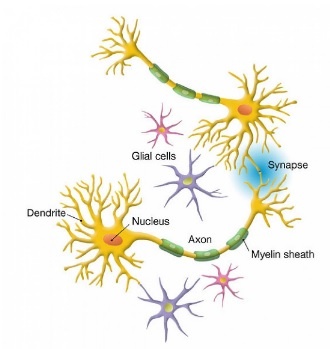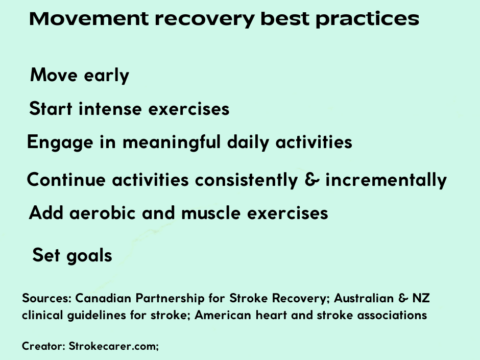
Exercise helps the brain to recover movements after a stroke. Here is how it happens!
The brain is a highly adaptable organ. Even without help, the brain is doing its best. But, with the right stimulation, it can do its job faster and better.
Exercise is one such form of stimulation.
Exercise stimulates the brain to create new neurons and new connections.
By engaging in physical activity, the brain is forced to make new connections and stimulate the growth of new neurons. This process, known as neuroplasticity, is essential for brain recovery after a stroke.
This is exciting news; this is how it happens, according to the researchers.
Exercise boosts BDNF production
First, physical activity stimulates the release of a vital protein – “Brain-Derived Neurotrophic Factor” (BDNF)1 in neurons. This protein is only produced in response to exercise and is present in response to aerobic exercise by researchers. It is also believed that resistance exercises may stimulate the release of BDNF in neurons.
What does this protein (BDNF) do?
Second, this protein triggers a series of changes in the brain. It includes sprouting of new dendrites and synapses1 (see Figure 1). With these structural changes, repair work begins. This is a sort of remodelling. These new neurons and connections are essential to take over the jobs earlier carried out by dead neurons.
(This remarkable ability of the brain to undergo structural changes to face changing realities is commonly called “neuroplasticity”).
However, there is a catch!
The exercise intensity level should cross a minimum threshold to release this protein.
The BDNF protein does not appear if the exercise attempts do not reach the required intensity threshold level. We have another important fact to remember: The intensity level and the BDNF level go hand-in-hand – the higher the intensity level higher the amount of release of BDNF level!
What is the minimum threshold?
Exercise is a key factor in regaining movements after a stroke, and the more you do, the better the results. Engage in consistent physical activity to achieve maximum progress in your recovery journey.
It should be moderate-to-high intensity.
What are the moderate-to-high-intensity exercises?
Treadmill high-intensity interval training resulted in significantly high blood levels of BDNF at least 20 minutes compared to treadmill moderate-intensity continuous exercise; that is what researchers have found out2.
Exercise helps to regain movements after a stroke; more the better.

The exercise intensity should receive a certain threshold to release this BNF protein.
Other benefits of exercise
Mang et al. (2013)1 describe other forms of assistance aerobic exercises provide to the brain’s recovery attempts.
Releasing messenger proteins
Researchers have uncovered that exercises stimulate neighbouring neurons to release messenger proteins such as dopamine and serotonin. Neurons require these proteins to communicate with each other fast and efficiently.
These are urgent requirements! Because the brain has to adapt to face new challenges after the stroke attack.
How do we know this?
New technologies such as “Functional MRI” (fMRI) help researchers view the changes while someone does activities or exercises.
Increasing the brain’s blood flow
Exercises increase the blood flow to the brain; this is necessary because the neurons require food and more oxygen for their extra-duty work.
Increasing muscle strength
This is necessary to restart activities of daily living as early as possible. More importantly, muscle non-use results in irreversible muscle wasting.
What types of exercises and activities should we promote?
Aerobic exercise
Aerobic exercises are another group of the most effective forms of exercise for stroke recovery is aerobic exercise. These exercises help to improve cardiovascular health, increase blood flow to the brain, and promote neuroplasticity. Aerobic exercise can be performed in various forms, including walking, cycling, and swimming. These activities are typically performed for 30 to 60 minutes at a moderate intensity, several times per week.
Resistance training
Another type of exercise that can aid in stroke recovery is resistance training. These exercises involve using weights or resistance bands to strengthen the muscles. Resistance training helps improve muscle strength, increase flexibility, and improve balance. By performing resistance training exercises, individuals who have had a stroke can work to rebuild their strength and regain the ability to perform activities of daily living.
Balance and coordination
Balance and coordination exercises are also important for stroke recovery. These exercises help to improve stability, balance, and coordination, all of which can be impacted by a stroke. Examples of balance and coordination exercises include tai chi, yoga, and balance boards. These exercises are performed slowly and deliberately, helping to improve balance and coordination over time.
Certain rules apply here in promoting post-stroke exercises and activities; the following posts discuss what those rules are;
- Six rules to regain movements after a stroke
- Regaining arm movement after stroke
- Best practices to regain walking after stroke
References
- Cameron S. Mang, Kristin L. Campbell, Colin J.D. Ross, Lara A. Boyd, Promoting Neuroplasticity for Motor Rehabilitation After Stroke: Considering the Effects of Aerobic Exercise and Genetic Variation on Brain-Derived Neurotrophic Factor, Physical Therapy, Volume 93, Issue 12, 1 December 2013, Pages 1707–1716, https://doi.org/10.2522/ptj.20130053
- Boyne, P., Meyrose, C., Westover, J., Whitesel, D., Hatter, K., Reisman, D. S., Cunningham, D., Carl, D., Jansen, C., Khoury, J. C., Gerson, M., Kissela, B., & Dunning, K. (2019). Exercise intensity affects acute neurotrophic and neurophysiological responses poststroke. Journal of applied physiology (Bethesda, Md. : 1985), 126(2), 431–443. https://doi.org/10.1152/japplphysiol.00594.2018


